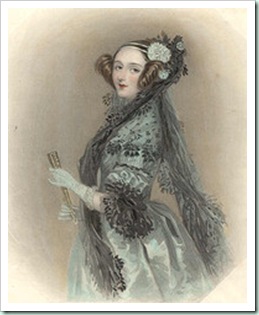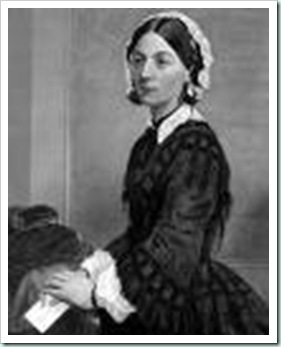 Ada Lovelace Day is an international day of blogging to celebrate the achievements of women in technology and science.
Ada Lovelace Day is an international day of blogging to celebrate the achievements of women in technology and science.
The first Ada Lovelace Day was held on 24th March 2009 and was a huge success. It attracted nearly 2000 signatories to the pledge and 2000 more people who signed up on Facebook.
Over 1200 people added their post URL to the Ada Lovelace Day 2009 mash-up. The day itself was covered by BBC,The Guardian, and The Telegraph, as well as hundreds of blogs worldwide.
Ada Lovelace [daughter of the poet Lord Byron]was one of the world’s first computer programmers, and one of the first people to see computers as more than just a machine for doing sums. She wrote programmes for Charles Babbage’s Analytical Engine, a general-purpose computing machine, despite the fact that it was never built. She also wrote the very first description of a computer and of software.
I signed the Pledge last year and nominated my old Maths Teacher as my tech heroine. This year I am choosing another female mathematician, but she is much more famous for revolutionising nursing care - the Lady With The Lamp - Florence Nightingale
As a girl, Florence begged her parents "to let her study mathematics instead of doing worsted work and practicing quadrilles." Her mother "did not approve, home duties were not to be neglected for mathematics."
She assumed that her daughter's destiny was marriage, "and what use were mathematics to a married woman?" Her father, who loved maths and had communicated that love to his daughter, nevertheless urged her to study more appropriate subjects for a woman, "history or philosophy". Florence expressed her preference for mathematics by saying, "I don't think I shall succeed so well in anything that requires quickness as in what requires only work." Her parents finally granted permission. [Years later, her mathematical approach saved the British army at Scutari during the Crimean war and provided the data that led to hospital reforms.]
Eventually Florence had tuition in arithmetic, geometry and algebra, and before her involvement with nursing, she spent her time tutoring children in these subjects. In the British Museum, one can read her lesson plans [including story problems based her pupils' experiences] for teaching arithmetic and geometry. She includes reminders to tell pupil teachers "to write notes of all the lessons they will give through the next week-they must never give them unprepared...tell them you prepare yourself."
Her lesson plans show concern about the education of girls. "Girls' arithmetic has been neglected--their geography should be made arithmetical." She made notes to ask such questions as:
How high is the reindeer? Are you as high? How high are you? 3 feet-how much is that? a yard- are you a quadruped? How far is the topmost point of Europe from the Equator? How far do you come to school? Two miles- now, if you were to walk two geographical miles a day, how long should you be walking to the equator?
So for Ada Lovelace Day 2010, I nominate Florence Nightingale as my heroine, because she was a woman who showed Christian compassion, a love of maths, and a commitment to good teaching!
Check out the Ada Lovelace Day website for more stuff!




I'm going to read your post in a mo, but I'm just commenting here as my email to you got bounced back this morning! I love your letter to the Minimads and can see why they are so enthusiastic about it. A real blessing for them and their mum. Thanks, Angela.
ReplyDeletePS My own stories are going to seem like a bit of a duplicate, but that's because telling Easter to children works like that! I hope you see any similarities as sincere flattery, rather than plagerism...